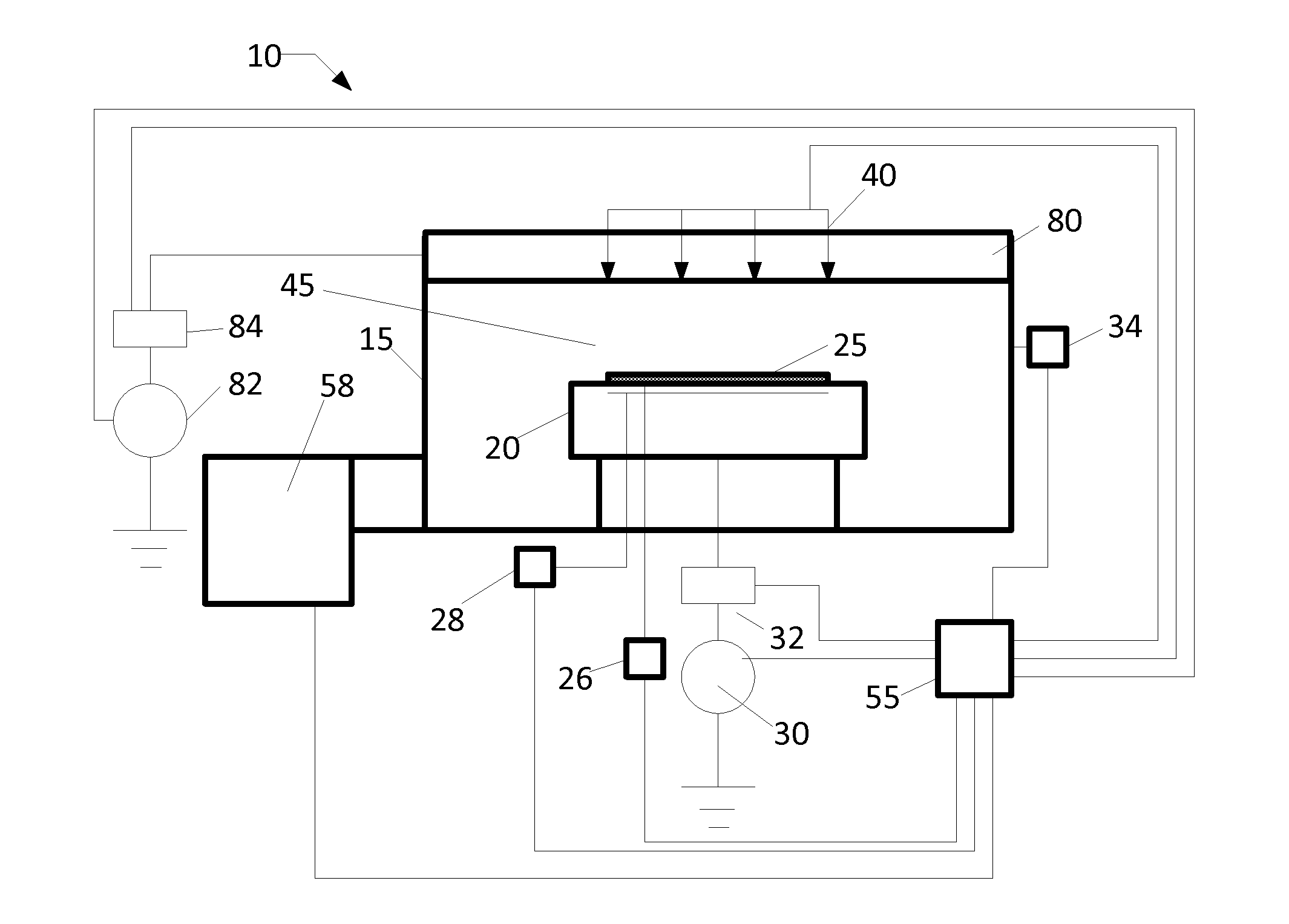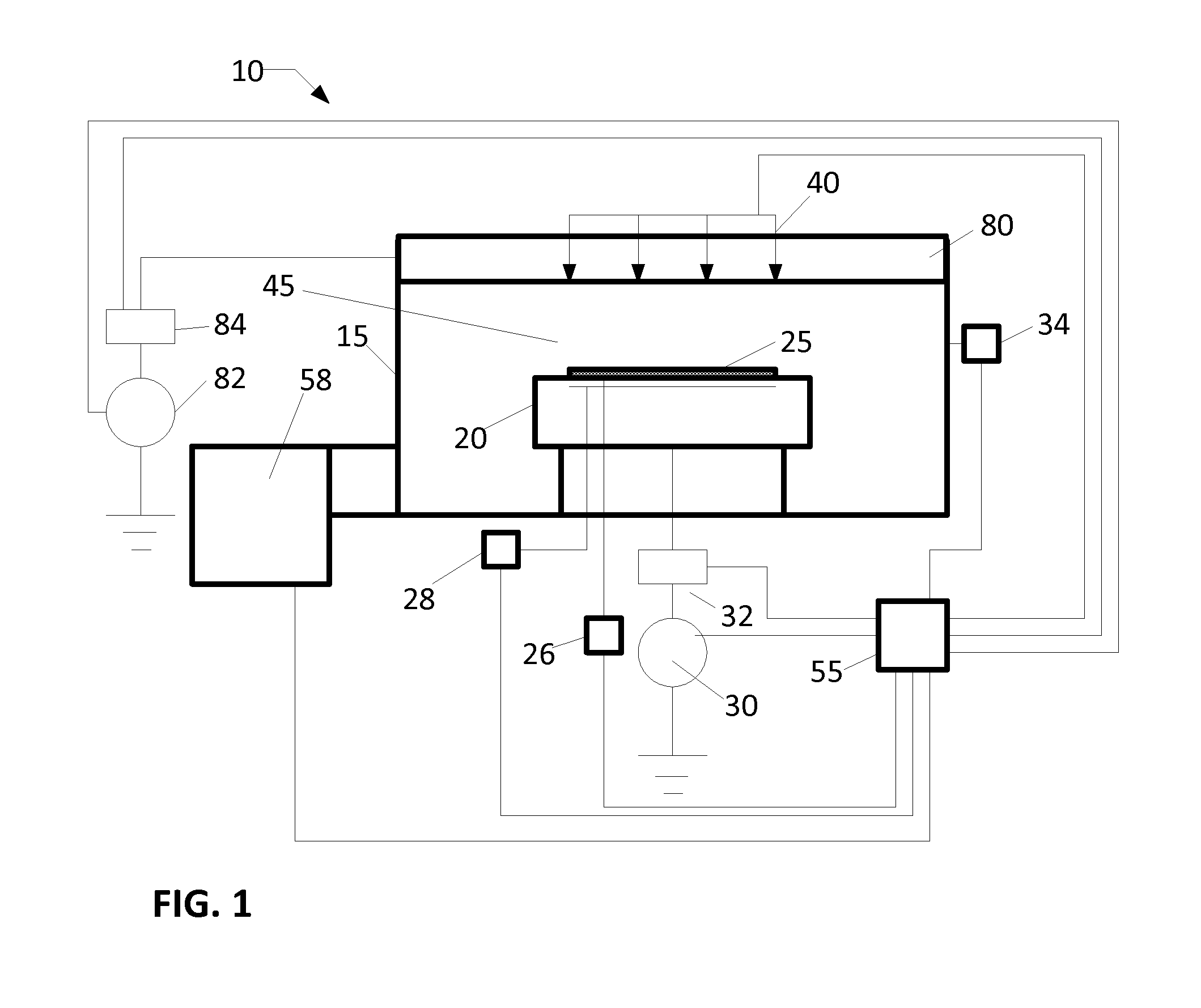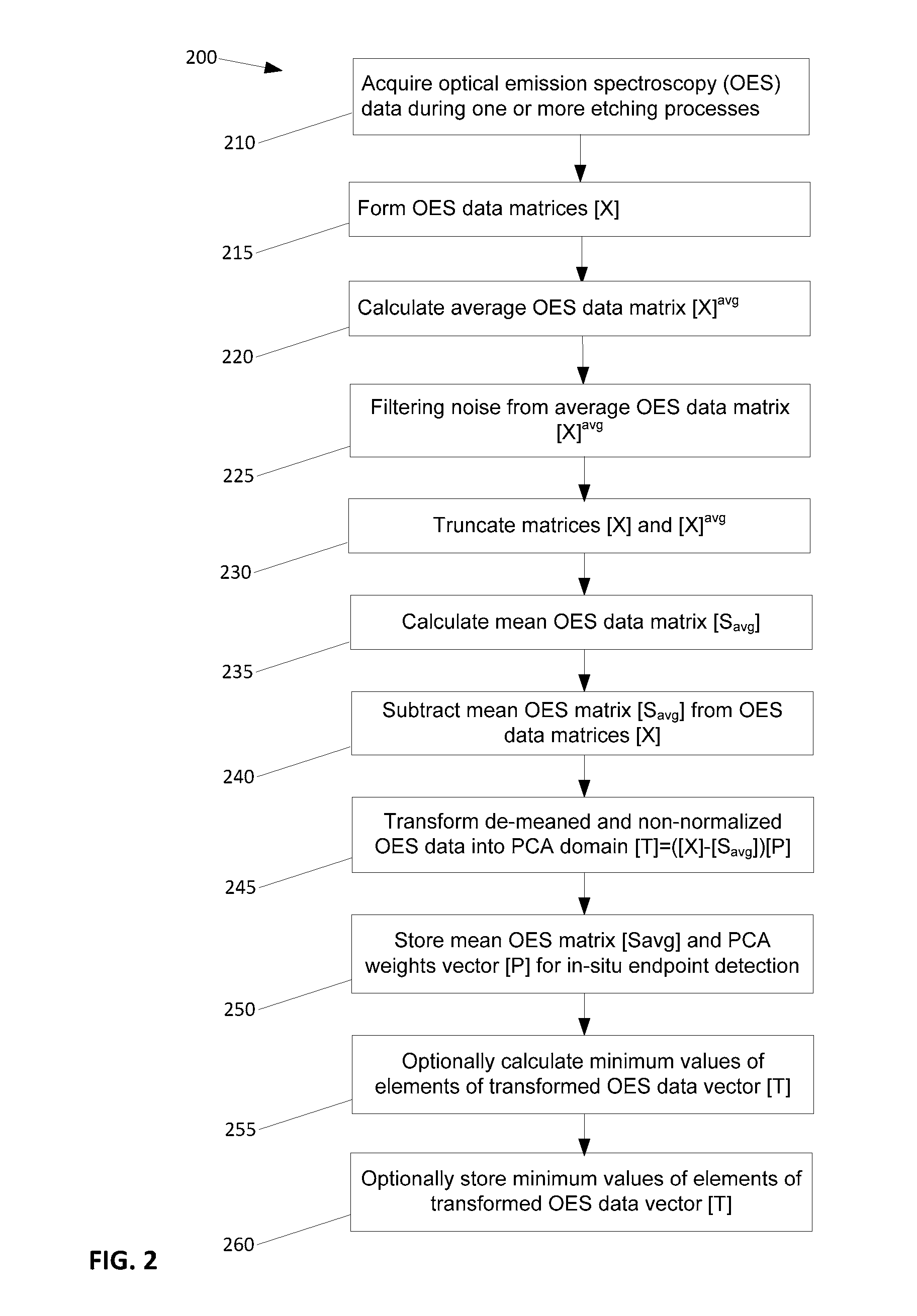Method of endpoint detection of plasma etching process using multivariate analysis
a plasma etching and multi-variate analysis technology, applied in the direction of digital computer details, semiconductor/solid-state device testing/measurement, instruments, etc., can solve the problem of not normalizing the data of optical emission spectroscopy (oes), and achieve the effect of improving the data quality for further processing and removing nois
- Summary
- Abstract
- Description
- Claims
- Application Information
AI Technical Summary
Benefits of technology
Problems solved by technology
Method used
Image
Examples
Embodiment Construction
[0021]In the following description, in order to facilitate a thorough understanding of the invention and for purposes of explanation and not limitation, specific details are set forth, such as particular geometries of a lithography, coater / developer, and gap-fill treatment system, and descriptions of various components and processes. However, it should be understood that the invention may be practiced in other embodiments that depart from these specific details.
[0022]In the description to follow, the terms radiation-sensitive material and photoresist may be used interchangeably, photoresist being only one of many suitable radiation-sensitive materials for use in photolithography. Similarly, hereinafter the term substrate, which represents the workpiece being processed, may be used interchangeably with terms such as semiconductor wafer, LCD panel, light-emitting diode (LED), photovoltaic (PV) device panel, etc., the processing of all of which falls within the scope of the claimed inv...
PUM
 Login to View More
Login to View More Abstract
Description
Claims
Application Information
 Login to View More
Login to View More - R&D
- Intellectual Property
- Life Sciences
- Materials
- Tech Scout
- Unparalleled Data Quality
- Higher Quality Content
- 60% Fewer Hallucinations
Browse by: Latest US Patents, China's latest patents, Technical Efficacy Thesaurus, Application Domain, Technology Topic, Popular Technical Reports.
© 2025 PatSnap. All rights reserved.Legal|Privacy policy|Modern Slavery Act Transparency Statement|Sitemap|About US| Contact US: help@patsnap.com



